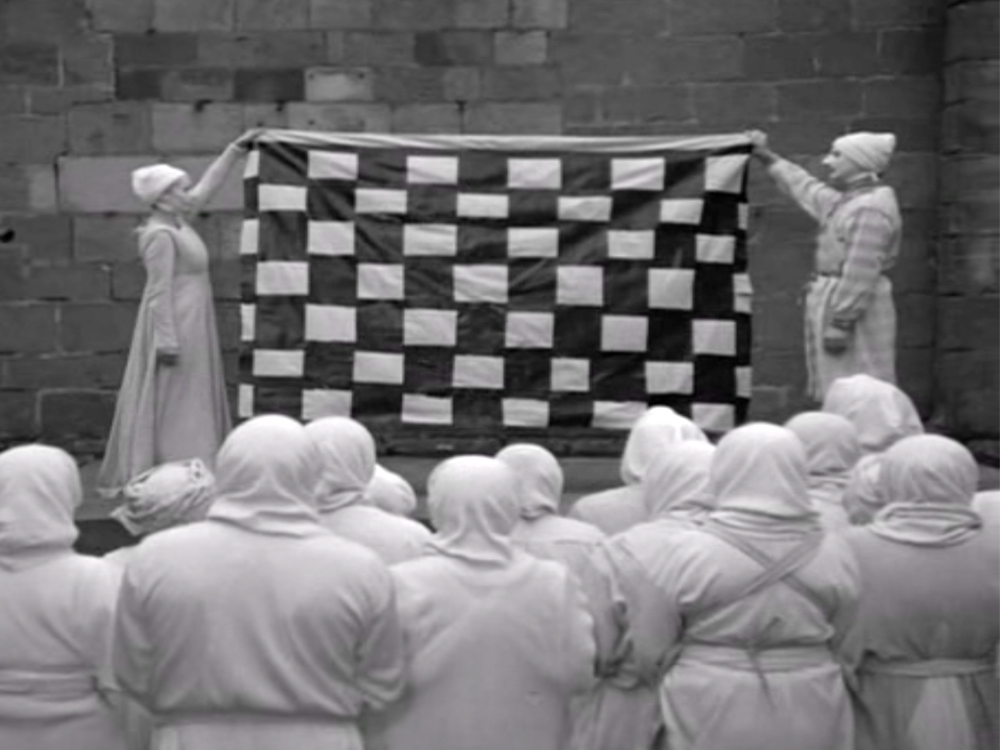
Around 1350, a young Jewish girl in a French village begins to have premonitions of the future. She draws rockets in the sand, explains these marvels to her grandfather, and visits a silent madwoman. The streets of the village are populated by farmers selling produce, itinerant storytellers and renegade friars. Like most of Meredith Monk’s performance works, Book of Days weaves together characters, music, movement, time and space.
“Book of Days is very much about the transparency and relativity of time – the sense that you can see one period through another and the sensation that everything could be happening simultaneously. that history is a thought, eternity is now. (...) Time goes backward and forward constantly in Book of Days. I wanted the audience to have the sensation of time travel. The film breaks expectations as to narrative structure, timing, text, character, and ambience.”
Meredith Monk1
“Meredith Monk has been an anomaly for much of her 27-year career as a composer and choreographer, creating dances that were operas, operas that were dances and mythic theater pieces that were operas and dances. To complicate matters, Ms. Monk is also a filmmaker. In Book of Days, she has created a film that is essentially a moving picture. (...) Book of Days is a very beautiful visual play of surfaces and textures, from brick to rough-plastered wall and from the luminous innocence that lights the girl’s face to the canny innocence illuminating the face of the crone, played by Ms. Monk, who teaches her to embrace her visions.”
Jennifer Dunning2

